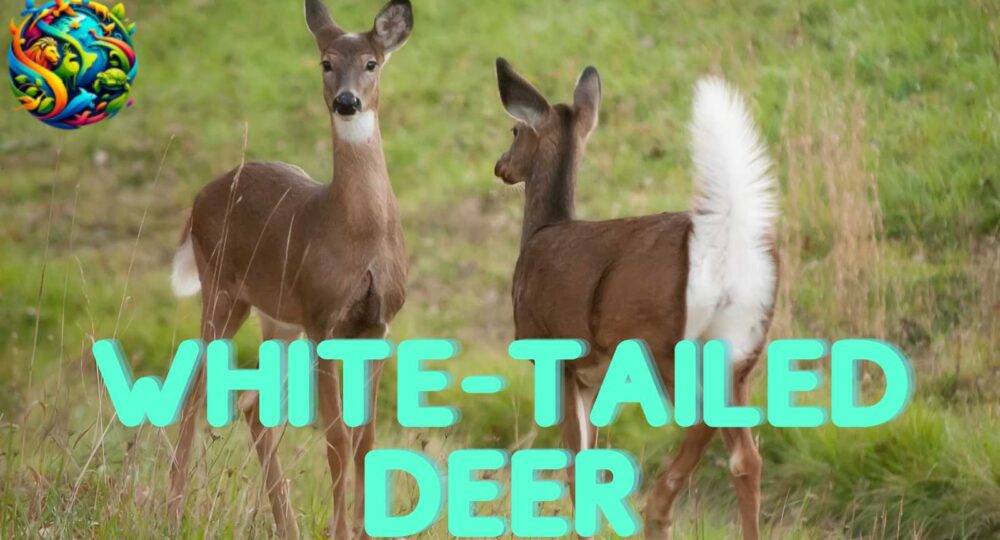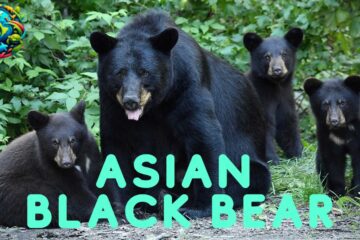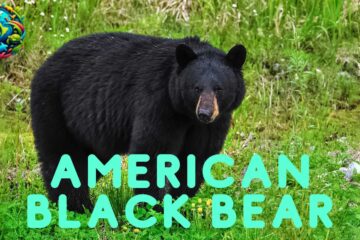
White-Tailed Deer: Icons of North American Wilderness
White-Tailed Deer: Icons of North American Wilderness
Introduction
Brief overview of the species: The white-tailed deer (Odocoileus virginianus) is one of the most widely recognized and studied mammals in North America. Known for its distinctive white underside of its tail, which it flashes when alarmed, this graceful herbivore is a staple of forests, grasslands, and agricultural fields across the continent.
Importance or uniqueness of the species: White-tailed deer are ecologically significant as prey for a variety of predators and as herbivores that influence plant communities. Their adaptability to diverse environments has allowed them to thrive in various regions, making them a key species in the ecosystems they inhabit.
General information about their population and distribution: White-tailed deer are abundant throughout North America, ranging from southern Canada to South America. They are particularly populous in the eastern United States, where they inhabit a range of habitats including forests, farmlands, and suburban areas.
Amazing Fact
One or two fascinating facts specific to the species:
- Incredible Speed and Agility: White-tailed deer can run at speeds of up to 30 miles per hour and leap over obstacles as high as 8 feet. Their agility helps them evade predators.
- Vocal Communication: These deer communicate using a variety of sounds, including grunts, bleats, and alarm snorts. Each sound serves a specific purpose, from alerting others of danger to calling fawns.
Something unique that sets them apart from other species: The white-tailed deer’s tail is a unique adaptation used for signaling. When alarmed, they raise their tail to reveal the white underside, signaling danger to other deer and potentially confusing predators.
Habitat/Food
Detailed description of their natural habitat: White-tailed deer are highly adaptable and can be found in a variety of habitats, including deciduous forests, grasslands, wetlands, and agricultural areas. They prefer habitats with a mix of open areas for foraging and dense cover for hiding and bedding.
Specific regions or climates they thrive in: They thrive in temperate climates but are also found in subtropical and tropical regions. Their range extends from southern Canada through the United States and Mexico, and into Central and South America.
Primary diet and any unique feeding behaviors: White-tailed deer are herbivores with a diverse diet that changes seasonally. They primarily feed on leaves, twigs, fruits, nuts, and acorns in the fall and winter, and on grasses, herbs, and forbs in the spring and summer. They are known for their browsing behavior, where they feed on a variety of plant species.
Appearance
Physical characteristics specific to the species: White-tailed deer have a reddish-brown coat in summer that turns grayish-brown in winter. They have large, expressive eyes and ears, and a distinctive white tail that is raised when alarmed. Adult males, known as bucks, have antlers that are shed and regrown annually.
Any variations in size, color, or features compared to other species: There is considerable variation in size and coat color among white-tailed deer, influenced by their geographic location. Northern populations tend to be larger than their southern counterparts, an adaptation to colder climates.
Adaptations that help them survive in their environment: White-tailed deer have several adaptations that help them survive, including acute senses of hearing, sight, and smell to detect predators. Their strong legs and hooves enable them to run swiftly and navigate rough terrain. Seasonal changes in coat color provide camouflage against predators.
Types/Subspecies
List and brief description of any known subspecies or varieties if applicable:
- Northern White-Tailed Deer (Odocoileus virginianus borealis): Found in Canada and the northern United States, larger in size with thicker fur.
- Texas White-Tailed Deer (Odocoileus virginianus texanus): Adapted to the arid environments of Texas and northern Mexico, smaller and more slender.
- Florida Key Deer (Odocoileus virginianus clavium): A smaller subspecies found only in the Florida Keys, adapted to the subtropical environment.
Differences between these subspecies: Subspecies of white-tailed deer vary in size, coloration, and habitat preferences, reflecting their adaptation to different environments. Northern subspecies tend to be larger with thicker coats, while southern subspecies are smaller and more heat-tolerant.
Predator & Threat
Natural predators: Natural predators of white-tailed deer include Wolves, Coyotes, Bobcats, Lions, and Bears. Fawns are particularly vulnerable to predation by these carnivores as well as by smaller predators like foxes and eagles.
Human-induced threats and conservation status: White-tailed deer face threats from habitat loss due to urbanization and agriculture, vehicle collisions, and hunting. Despite these threats, they are not considered endangered and have a stable population due to effective wildlife management and conservation efforts.
Efforts being made to protect them: Conservation efforts include habitat restoration, regulated hunting to control population sizes, and measures to reduce vehicle collisions, such as wildlife crossings. Wildlife management programs monitor deer populations and health, ensuring sustainable numbers.
Mating
Mating behaviors and rituals specific to the species: The mating season, or rut, occurs in the fall. Bucks engage in behaviors such as sparring with other males, rubbing their antlers on trees, and marking their territory with scent to attract females. Does enter estrus for a short period, during which bucks compete for the opportunity to mate.
Breeding season and reproductive cycle: Breeding typically occurs from October to December. After a gestation period of about 200 days, does give birth to 1-3 fawns, usually in late spring. Fawns are born with white spots that provide camouflage and are nursed by their mother for several months.
Care for the young and parental involvement: The doe cares for her fawns, hiding them in vegetation to protect them from predators while she forages. Fawns stay with their mother for their first year, learning vital survival skills. As they mature, they become more independent but often remain in proximity to their mother’s home range.
How They Communicate
Types of communication used (vocalizations, body language, etc.): White-tailed deer communicate through vocalizations, body language, and scent marking. They use grunts, bleats, and alarm snorts to convey different messages. Visual signals, such as tail-flagging, indicate danger.
Specific examples of how they communicate within the species:
- Grunts: Used by bucks during the rut to assert dominance or signal to does.
- Bleats: Commonly used by fawns to call their mother.
- Snorts: Serve as an alarm call to warn other deer of potential danger.
Body language, such as ear positioning and tail movements, also plays a significant role in communication. Scent marking through glands located on their legs, forehead, and preorbital area helps establish territory and convey reproductive status.
Movies on It
- “Bambi” (1942): A classic Disney animated film that follows the life of a young white-tailed deer named Bambi as he grows up in the forest.
- “The Deer Hunter” (1978): An iconic film featuring a dramatic hunting scene involving white-tailed deer, symbolizing themes of nature and survival.
FAQs
Common questions about the species:
- What do white-tailed deer eat?
- White-tailed deer are herbivores that primarily feed on leaves, twigs, fruits, nuts, and acorns in the fall and winter, and on grasses, herbs, and forbs in the spring and summer.
- Where do white-tailed deer live?
- They inhabit a variety of environments including forests, grasslands, wetlands, and agricultural areas across North America, from southern Canada to South America.
- How do white-tailed deer communicate?
- They communicate through vocalizations such as grunts, bleats, and snorts, as well as through body language and scent marking.
- How are white-tailed deer adapted to their environment?
- They have keen senses of hearing, sight, and smell, strong legs for running and jumping, and seasonal changes in coat color for camouflage.
- Are white-tailed deer endangered?
- No, white-tailed deer are not endangered. They have a stable population due to effective wildlife management and conservation efforts.
This comprehensive article delves into the world of the white-tailed deer, highlighting their adaptability, ecological significance, and the fascinating behaviors that make them icons of the North American wilderness. From their diverse diet to their complex communication methods, white-tailed deer are a testament to the resilience and beauty of wildlife.







